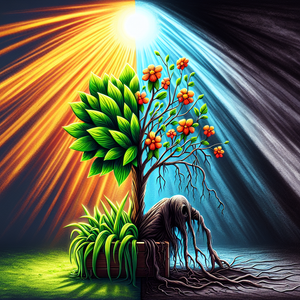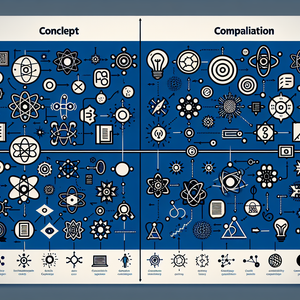The Art of Color-Coded Snacks

At its core, the appeal of color-coded snacks lies in the psychological power of color. Research has long shown that colors influence our emotions, perceptions, and choices—even in food. For instance, warm colors like red and orange are known to stimulate appetite, while cool tones like green and blue evoke feelings of health, calm, and refreshment. By incorporating these principles into snack curation, one can create spreads that not only look stunning but also tap into the emotional connection we have with food. The satisfaction we derive from color-coded snacks also ties back to our brain's love of patterns and order. Think about the joy sparked by a perfectly aligned bookshelf or a neatly arranged closet. These tidy, intentional arrangements help reduce stress and provide a sense of control and calm. Similarly, a meticulously organized snack drawer or platter has the power to uplift and inspire. Imagine opening a drawer to find not a jumble of bags and boxes, but an array of vibrant snacks sorted by hue, with reds merging seamlessly into oranges, yellows, greens, blues, and purples. It’s not just a snack—it’s a moment of joy.
Starting Your Journey: How to Master Snack Curation
Creating a color-coded snack display may seem like a task for only the most artistic among us, but it’s surprisingly accessible. All it takes is a little planning, creativity, and a willingness to experiment. Here’s a step-by-step guide to get started: 1. Choose a Color Palette: Start by deciding on your theme. Are you aiming for a full-spectrum rainbow effect, or would you prefer a monochromatic arrangement? Rainbow spreads are vibrant and cheerful, perfect for parties or events, while sticking to a single shade (e.g., shades of pink or green) creates a sophisticated, minimalist vibe. 2. Select Snacks by Color: Next, choose snacks that naturally fit your chosen color scheme. Here are some ideas: Red: Fresh strawberries, red bell peppers, cherry gummies, beet chips. Orange: Baby carrots, cheddar crackers, dried cantaloupe, orange slices. Yellow: Lemon cookies, banana chips, pineapple chunks, popcorn. Green: Cucumber slices, pistachios, matcha-flavored almonds, celery sticks. Blue/Purple: Blueberries, blackberries, purple potato chips, lavender macarons. Don’t hesitate to get creative. For snacks that don’t naturally come in specific colors, like baked goods, you can use food coloring or decorative elements to align them with your aesthetic. 3. Arrange Thoughtfully: Presentation is key. Group snacks by color, but don’t forget to play with textures and shapes to make your display visually engaging. For example, pair smooth items like candies with crunchy ones like chips, or arrange round crackers alongside angular pretzels. Glass jars, clear containers, or trays work especially well to showcase the vibrant hues without distraction. 4. Add Finishing Touches: Elevate your display with small details. Line your snack drawer with a neutral or contrasting background to make the colors pop, or garnish your serving platters with edible flowers, herbs, or decorative napkins. These touches add depth and sophistication to your arrangement.
Real-Life Inspiration: Snack Artistry in Action
From social media influencers to event planners, snack artistry is everywhere. Sarah Johnson, also known as @SnackSpectrum on Instagram, has garnered a massive following for her vibrant, color-coded snack displays. Her posts often feature entire drawers filled with neatly arranged, chromatically coordinated snacks, turning everyday treats into miniature works of art. Whether it’s a rainbow-themed charcuterie board or a monochromatic snack jar, her creations prove that even the smallest details can make a big impact. Similarly, event planner Mia Torres has transformed color-coded snack stations into a signature feature for her clients’ events. Her grazing tables—complete with everything from colorful cheeses to dyed bread rolls—are not just beautiful but also practical, helping guests navigate the spread with ease. “When you design snacks by color, you’re creating an experience,” Torres explains. “It’s something people remember long after the event is over.”
The Practical Benefits of Snack Curation
Beyond the undeniable beauty of color-coded snacks, there are several practical advantages to embracing this trend: 1. Enhanced Organization: Sorting snacks by color encourages tidiness, especially in drawers or pantries. A visually appealing arrangement naturally motivates you to keep things in order. 2. Encouraged Mindful Eating: Thoughtfully curated snacks are more likely to be savored slowly, reducing the likelihood of mindless eating. 3. Child-Friendly Fun: For families with kids, color-coded snacks can be a playful way to introduce healthy foods. A “yellow day” could involve pineapple chunks, banana rounds, and lemon-flavored yogurt, while a “blue day” might feature blueberries, purple grapes, and blue corn tortilla chips. 4. Event-Ready Displays: At gatherings, color-coded snack spreads are an instant crowd-pleaser, offering both aesthetic appeal and a functional way to serve a variety of treats.
The art of color-coded snacks is more than just a fleeting trend—it’s a practice that combines creativity, mindfulness, and the universal joy of food. Whether you’re organizing a snack drawer at home or curating a platter for a party, this approach invites you to think beyond taste and explore the beauty of intentional presentation. So why not dive in? Pick your palette, gather your snacks, and start arranging. The process itself is as satisfying as the end result, proving that sometimes, we really do eat with our eyes first.
Food Stylist
Food magazines, advertising agencies, and product brands such as General Mills, Kraft, or Nestlé
Responsibilities
Arrange food for photoshoots, videos, and advertisements with a focus on aesthetics, texture, and color harmony.
Work closely with photographers and marketing teams to create visually appealing compositions.
Skills Required
Expertise in plating, knowledge of lighting effects on food presentation, and a flair for creativity.
Proficiency in using tools like tweezers, small brushes, and culinary adhesives to perfect food arrangements.
Common Employers
Food magazines, advertising agencies, and product brands such as General Mills, Kraft, or Nestlé.
Unique Qualifications
Experience in art direction or visual arts is often advantageous, as is a background in culinary arts.
Event Grazing Table Designer
Event planning agencies, catering companies, or as an independent entrepreneur
Responsibilities
Design and assemble elaborate grazing tables or boards for events, incorporating color schemes, themes, and dietary requirements.
Source and arrange artisanal snacks, cheeses, and other gourmet items into cohesive, striking presentations.
Skills Required
Strong organizational skills, an eye for design, and knowledge of pairings (e.g., wine and cheese, sweet and savory).
Ability to work under tight deadlines while maintaining high standards.
Common Employers
Event planning agencies, catering companies, or as an independent entrepreneur.
Unique Qualifications
Professional certifications in food safety and handling, and familiarity with trending aesthetics like boho or monochromatic spreads.
Snack Product Developer (R&D Specialist)
Companies like Mondelez International, PepsiCo, or small artisanal snack brands
Responsibilities
Develop new snack products with a focus on flavor, texture, and visual appeal.
Test ingredient combinations, oversee production trials, and ensure products align with market trends, including health-conscious or visually appealing snacks.
Skills Required
Deep understanding of food science, creativity in flavor profiling, and the ability to translate consumer feedback into product improvements.
Common Employers
Companies like Mondelez International, PepsiCo, or small artisanal snack brands.
Unique Qualifications
A degree in food science or culinary arts, and an understanding of emerging trends like plant-based snacks or natural food dyes.
Visual Merchandiser for Food Retail
Grocery chains like Whole Foods, Trader Joe’s, or boutique food shops
Responsibilities
Design in-store displays that showcase snacks and other food items in an aesthetically pleasing manner.
Use color theory and visual storytelling to enhance marketing campaigns and improve product visibility.
Skills Required
Knowledge of retail merchandising, proficiency in design software (e.g., Adobe Creative Suite), and a talent for translating branding into physical displays.
Common Employers
Grocery chains like Whole Foods, Trader Joe’s, or boutique food shops.
Unique Qualifications
Experience in design, marketing, or retail management, and a proven track record in creating engaging in-store experiences.
Branding and Packaging Designer (Food Industry)
Design agencies, snack companies (e.g., Annie’s, KIND), or as a freelance designer for small brands
Responsibilities
Design snack packaging that aligns with brand identity and appeals to target demographics.
Incorporate color psychology and trends into packaging to maximize shelf appeal and build brand recognition.
Skills Required
Expertise in graphic design, knowledge of color theory, and the ability to balance form and function for food-safe packaging.
Common Employers
Design agencies, snack companies (e.g., Annie’s, KIND), or as a freelance designer for small brands.
Unique Qualifications
Experience in consumer goods packaging design, and familiarity with sustainable packaging materials and regulations.


